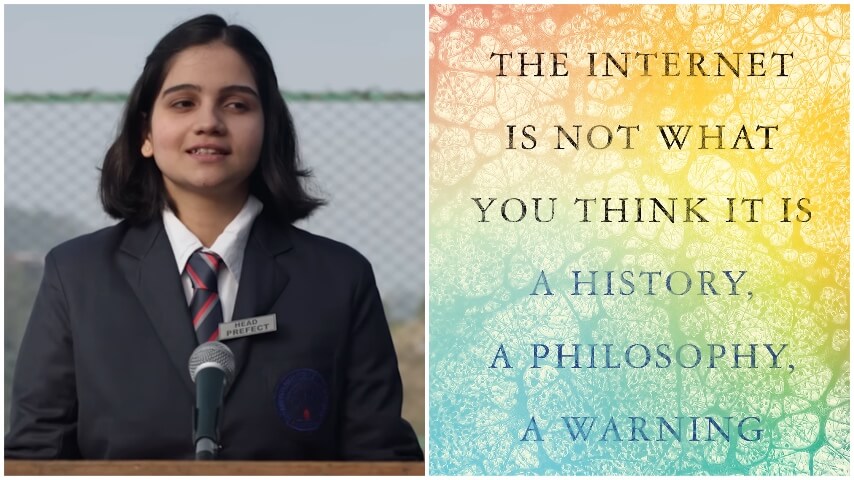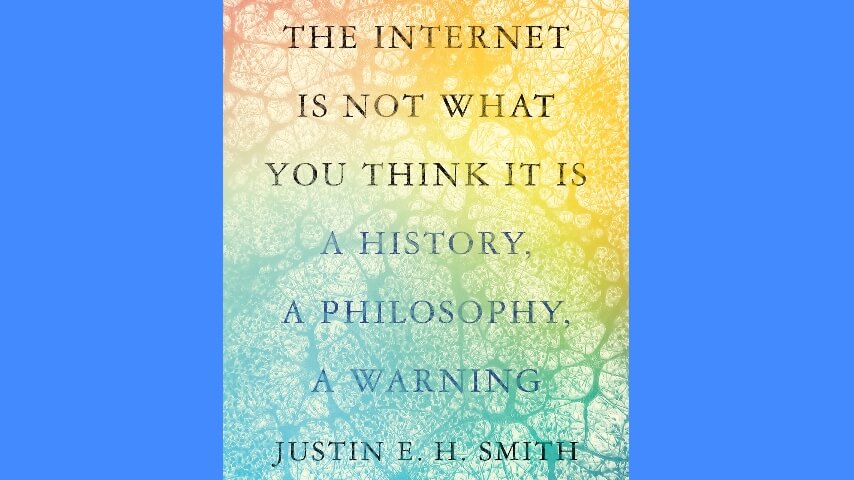Staff Picks: A coming-of-age film and a book that tries to solve the problem of the internet
How's this for a twofer? A heartwarming bildungsroman and a cautionary tale.
Left: Preeti Panigrahi (Screenshot: Girls Will Be Girls); Right: Cover of The Internet Is Not What You Think It Is (Credit: Princeton University Press)
On this, the last weekend of what’s bound to be known as the Before Times, our staffers Saloni Gajjar and Drew Gillis share recommendations for a lovely coming-of-age story in the vein of Ladybird and a deep history of the internet.
Girls Will Be Girls
Girls Will Be Girls, a 2024 Sundance-winning film now on Prime Video, gets inside the head of its central mother-daughter duo—their schisms and similarities, hurdles and hopes, how the world views them, and how they each view the world. It offers a sensitive and unfiltered portrayal of their relationship, joining the ranks of genre members like Greta Gerwig’s Ladybird and Minhal Baig’s hidden gem Hala. At a time when movies out of India tend to get stuck under the bombastic RRR umbrella, it’s been a treat to watch this movie (along with All We Imagine As Light) garner acclaim.
Written and directed by Shuchi Talati, Girls Will Be Girls has the hyper-specific setting of a private boarding school in a small Himalayan town. Yet its themes are universal. Talati captures the environs with a sweeping gaze: the beautiful mountains, winding roads, and a starry sky. This open air contrasts high schooler Mira’s (Preeti Panigrahi) suffocation under the watchful eye of her loving but strict mother, Anila (Kani Kusruti). Mira, a studious teacher’s pet, finds solace in bonding with the cool and easygoing transfer student Sri (Kesav Binoy Kiron). The more alone time she spends with him, the more sexually curious Mira becomes, having no one but the internet to turn to for advice. Meanwhile, Sri also gets closer to Anila, sensing her innate loneliness and need to belong, especially with her daughter never giving her the attention she wants. It’s also Sri’s way to remain in Mira’s vicinity, as much as Mira hates her mom’s “interference.”
If this sounds suspicious, don’t worry, Girls Will Be Girls isn’t an exploitative saga. Instead, it sensitively puts Mira’s coming-of-age and Anila’s midlife crisis on the forefront. Their dynamic is laced with angst thanks to Mira, who, like most 15-year-old girls, yearns for freedom with a dose of anarchy. I couldn’t relate harder to her if I tried. Eventually, Mira realizes that when the odds are stacked against her, there’s only one person who will come through for her: her mother.
Talati builds to the movie’s climax with care, earning the moment in which Mira realizes Anila is as stifled in this world as she is, albeit differently. The title hits you hard at that point. Girls Will Be Girls, but why must they have to be? Panigrahi is a revelation in her debut role, and Kusruti is having a long overdue phenomenal run with this and AWIAL. With its potent performances and script, I feel confident in saying that Girls Will Be Girls is one my favorites of last year. It’s not the kind of India-based movie you might be used to—loud, colorful, star-studded—but it’s the kind I hope more audiences open themselves up to. [Saloni Gajjar]
The Internet Is Not What You Think It Is by Justin E.H. Smith

Cover of The Internet Is Not What You Think It Is (Credit: Princeton University Press; Graphic: The A.V. Club)
I think a lot about the internet. Not just as someone who writes and edits words on it for a living, but as one of the oldest Zoomers who has never really lived without it but nevertheless has seen it change a lot in the past three decades. Like, I imagine, most of us, I occasionally fantasize about the whole thing disappearing, forcing us to spend more time together and to read paper books like we did in the halcyon days of 2003. It may be too late to put that genie completely back in the bottle, but we can read books, and we can even understand our current predicament differently in doing so. That’s exactly what Justin E.H. Smith’s The Internet Is Not What You Think It Is: A History, A Philosophy, A Warning sets out to do.
A professor of the philosophy of science, Smith presents a case that the internet is a byproduct of human evolution, rather than something human beings discovered. (If his title gives you pause, fear not—this is not something that reads academic.) A web is not part of a spider, but it is something that is so associated with a spider that it might as well be. In Smith’s estimation, the human version of this web is our desire and need to communicate, and to do it as quickly as possible. Long, long ago, after the written word was invented, people would run letters from point A to point B. We invented telegrams and telephones and email. To Smith, these are more than inventions or discoveries, but expressions of human behavior. With the connectivity that we now possess, is not as new as we think it is, even if it’s faster and we may call it something different than before.
I came across Smith’s work when an excerpt of Not What You Think It Is was published in Wired in 2022. I didn’t realize it was an excerpt and thought it was just an essay; imagine my delight when I found out there was even more of it. It’s easy to feel pessimistic about our current digital environment, as beloved websites lose staff and close doors and social media algorithms feed you more of the worst things you’ve ever seen. This book doesn’t necessarily make me feel better—at worst, some of the evolutionary framing can make it feel a bit fatalistic—but it does allow me to think about a problem differently. Instead of thinking of the internet as some alien entity descended from the heavens (or risen from the pits of hell), we can think of it as a distinctly human problem. That’s not a solution, but it’s at least a start. [Drew Gillis]